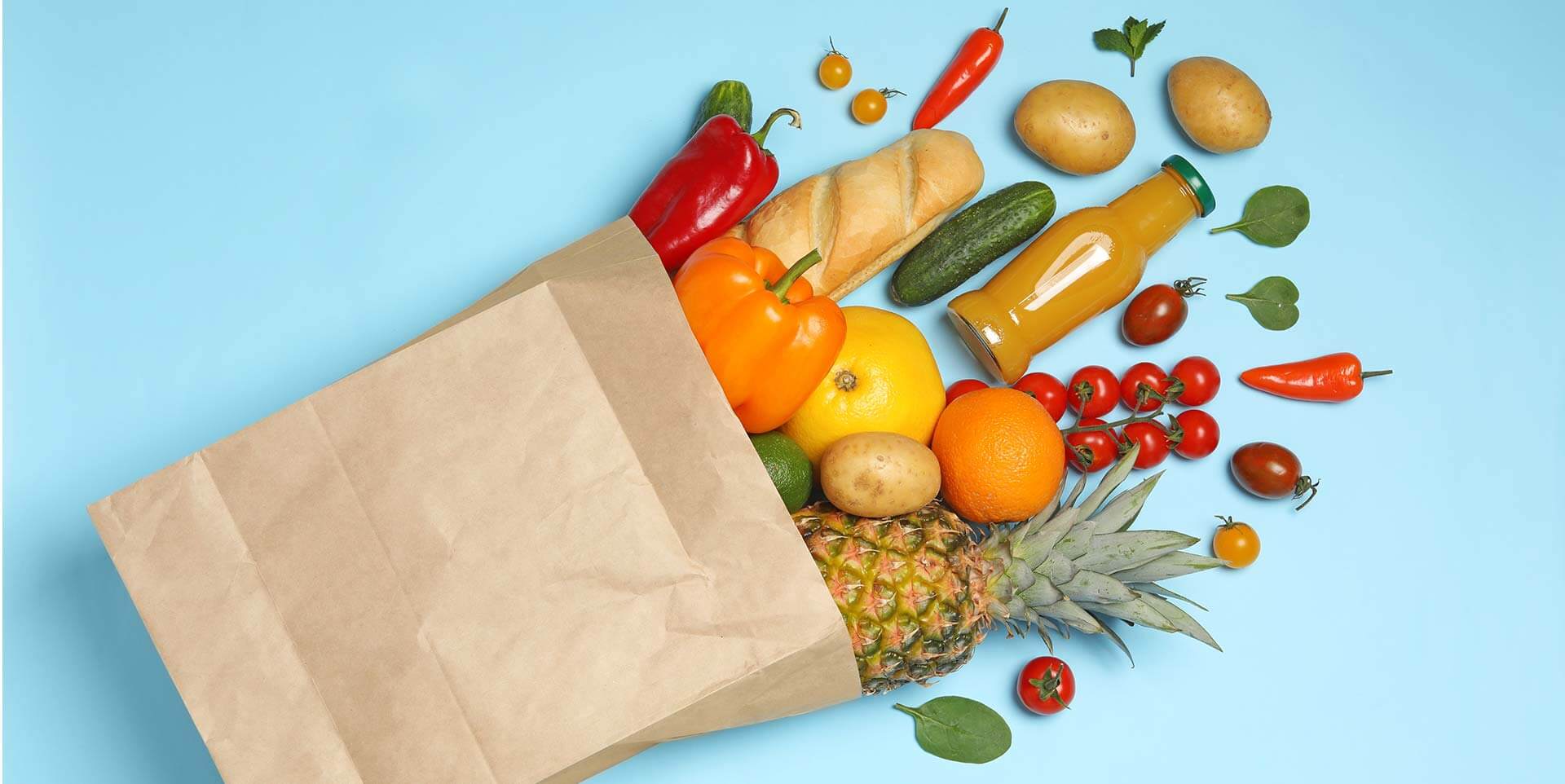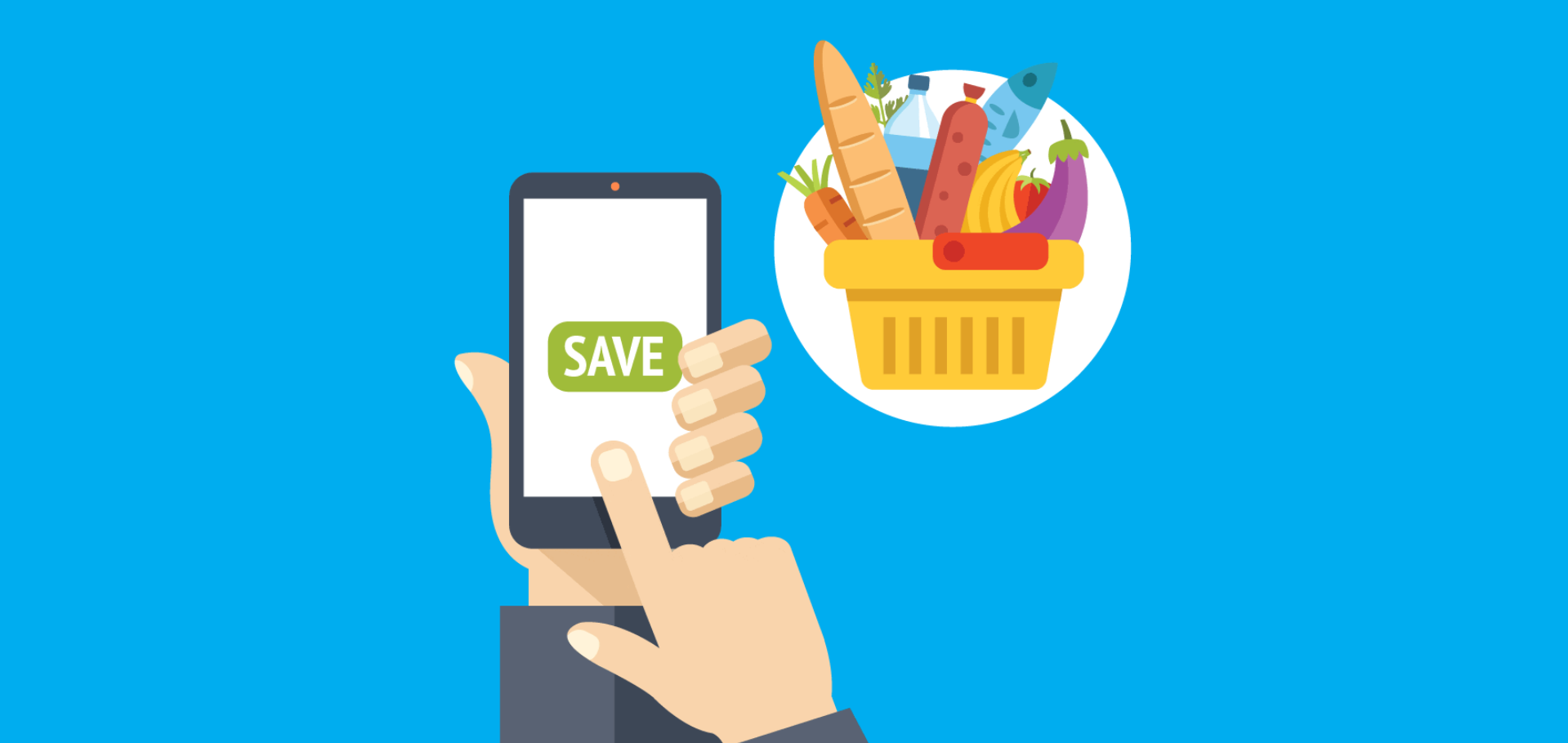The Ultimate Guide To Accessing Free Food And Groceries: Tips, Resources, And Strategies
Eating healthy and saving money at the grocery store can be an uphill battle. With food prices soaring, many people seek ways to fill their pantries without emptying their wallets.
If you’re feeling the pinch when checking out at the register, know you’re not alone in this challenge.
One surprising fact is that numerous resources exist for accessing free food and groceries—opportunities that might be around your corner. This guide is packed with actionable tips on finding food assistance programs, optimizing meal plans to save cash, and tapping into community support networks to alleviate food insecurity.
By stepping through our comprehensive roadmap of strategies and resources—from leveraging SNAP benefits to locating local food banks—you’ll unlock the means to stretch your budget further while ensuring nutritious meals grace your table.
Ready to discover a bounty of options for free sustenance? Let’s turn those cupboards from bare to bountiful!
Key Takeaways
- Access free groceries by exploring local food banks, SNAP benefits assistance, federal programs like TEFAP and WIC, and drive-thru pantries.
- Consider various food assistance programs such as SNAP, WIC, National School Lunch Program, and senior food assistance to ensure affordable and nutritious food access.
- Explore meal planning resources like SNAP-Ed programs and the Full Cart program to save money on groceries while maximizing your budget.
Finding Free Food and Groceries

Explore local food banks, SNAP benefits assistance, federal programs, and drive-thru pantries to access free groceries. Virtual food banks and assistance programs also offer meal options for needy people.
Local Food Banks
Local food banks are like big cupboards that help people get free food. They work with places in your town to give good food to those who need it.
- Find a local food pantry. Many food banks have lists of pantries where you can get free groceries. Just type your zip code on their website to see a list.
- Visit a soup kitchen. These kitchens offer hot meals if you are hungry and cannot cook at home.
- Check out meal programs. Some programs give or deliver free school meals to older adults at home.
- Learn the hours and locations. Food banks have different times they are open. Find one that fits your schedule.
- Look for drive-thru options. Some pantries let you pick up a food box without leaving your car.
- Ask about nutrition education. You can learn how to make healthy meals with the food you get.
- Give back when you can. If someday you don’t need help, maybe donate some food or time to say thank you.
- Understand eligibility requirements. Some places may ask questions to see if you qualify for free groceries.
- Discover mobile food distributions near you. These trucks bring fresh produce right to your neighborhood.
- Help grow the network of food banks by telling others about these resources or volunteering if possible.
SNAP Benefits Assistance
SNAP Benefits Assistance is a big help for families with little money. It gives them a way to pay for healthy and nutritious food. You can use SNAP benefits at many grocery stores just like cash.
To get SNAP, you must complete an application online or go somewhere that can help you apply.
If you’re trying to save money, think about using SNAP. This program can make it easier to afford the food your family needs. Many people use it to keep their kitchen full of good food.
If you need help getting food today, see if SNAP might be right for you.
Federal Programs
After exploring SNAP Benefits Assistance, let’s look at Federal Programs that can help save money on food. These programs offer you and your family various ways to get nutritious food.
- The Emergency Food Assistance Program (TEFAP): This program gives free food to people with low income. It has healthy options like fruits, vegetables, meats, and dairy.
- Women, Infants, and Children (WIC): WIC helps moms and young kids eat well and stay healthy. It supports pregnant women, new mothers, babies, and toddlers with food for growing bodies.
- Feeding America: Feeding America works together with federal food assistance. It offers help finding food pantries and meal programs in your area.
- Senior Farmers’ Market Nutrition Program (SFMNP): This program provides fresh fruits and veggies to older adults. It gives them checks or coupons to use at farmers’ markets.
- Commodity Supplemental Food Program (CSFP): CSFP offers free healthy groceries to seniors aged 60 and over.
- National School Lunch Program: Gives free or reduced-price meals to kids at school. If you have school-aged children, this can reduce your grocery bills.
- Summer Food Service Program: When school is out, this program keeps kids fed with free meals during the summer months.
Programs for Different Situations

- Aging & Disability: Look into community organizations and government programs that provide meal delivery and assistance services for seniors or individuals with disabilities.
- Children & Families: Explore government initiatives like the National School Lunch Program and the Special Supplemental Nutrition Program for Women, Infants, and Children (WIC). Check out local food banks and pantries specifically catering to families in need.
- Employment: Seek job training programs offering food assistance or check with local employers for food support provisions.
- Health Care: Some medical facilities may have programs helping patients access nutritious food. Additionally, investigate if there are local health clinics offering food resources.
- Housing & Shelter: Many homeless shelters provide meals and can also assist in connecting individuals with other food resources in the community.
- Immigration: Research immigrant support organizations that guide immigrant families or individuals in accessing food aid.
- Legal Services: Some legal aid organizations may have information about available food assistance programs for those facing legal challenges.
- Mental Health: Mental health institutions often collaborate with community initiatives to ensure individuals receive proper nutrition. Reach out to mental health providers or advocacy groups to explore options.
- Substance Use: Support groups, recovery centers, or addiction treatment facilities may have connections to food assistance programs tailored for those in recovery.
- Tax Services: Some tax preparation services offer information on accessing additional financial support, such as free meal programs or food vouchers during tax season.
- Utility Assistance: Certain utility assistance programs may include benefits beyond just covering utilities; inquire about potential supplementary provisions like grocery assistance.
- Veterans: Look into veteran-specific organizations or governmental agencies that provide food support tailored to veterans’ needs.
Drive-Thru Pantries
- Drive-thru pantries offer a safe and efficient way to get free food without leaving your car.
- You can drive to the designated location, where volunteers will load your vehicle with various food items.
- This option is convenient for individuals with transportation challenges or health concerns that make accessing traditional food distribution sites difficult.
- Many drive-thru pantries operate regularly, providing predictable access to essential groceries for needy people.
Virtual Food Banks
Virtual food banks are online platforms collaborating with local food pantries, soup kitchens, and meal programs to provide free food to those in need.
- These platforms collect, sort, and distribute donations to ensure the food reaches those most in need.
- Digital tools in virtual food banks include online grocery ordering and using SNAP benefits to purchase free or discounted food.
- Many food banks have developed virtual food banking programs to reach a larger audience and maximize their impact.
Food Assistance Programs
If you’re struggling to make ends meet and need help accessing food, several assistance programs are available to provide support. Here are some options to consider:
- SNAP (Supplemental Nutrition Assistance Program): This federal program offers nutrition assistance to low-income individuals and families. It helps cover the cost of groceries so you can save money on food expenses.
- WIC (Women, Infants, and Children): WIC provides nutritious foods, nutrition education, and referrals to health care and other services for low-income pregnant women, new mothers, infants, and young children.
- National School Lunch Program: This program provides free or reduced-price meals to children in schools based on their family’s income level. It’s a great resource for families looking to save on food costs.
- Senior Food Assistance: Specific federal programs are available for seniors that provide access to nutritious food options at no cost or at a reduced price.
- Food Pantries and Food Banks: These organizations offer free or low-cost groceries to needy individuals and families. They often distribute non-perishable items like canned goods, pasta, rice, etc.
Free Meal Options
After learning about various food assistance programs, you must consider free meal options to manage your budget effectively. Here are some reliable and practical choices to access meals without spending extra money:
- Free Meal Programs at Local Community Centers or Churches
- Soup Kitchens Offering Nutritious Meals for Individuals and Families in Need
- Meal Delivery Services for Seniors and Persons with Disabilities
- Summer Meal Programs for Children When School is Out
- Government – Sponsored Free Meal Initiatives During Emergency Situations or Natural Disasters
Saving Money on Groceries

Utilize meal planning resources, such as online tools and budget-friendly recipe websites, to maximize your grocery budget. Take advantage of the Full Cart program and other free food resources to access affordable and nutritious food options.
Meal Planning Resources
Looking to save money on groceries? Meal planning is a great way to reduce food waste and minimize grocery expenses. Here are some resources to help you get started:
- SNAP-Ed Programs: These programs offer materials to teach meal planning skills to help you save money while eating healthy.
- Full Cart Program: This program provides access to affordable groceries and meal kits, helping you stick to a budget while still enjoying nutritious meals.
- Free Food Resources: Explore local food banks, pantries, and community programs offering free or low-cost groceries to needy individuals.
- Affordable Food Options: Look for stores and markets that offer discounted prices on healthy foods, allowing you to stretch your food budget further.
- Meal Planning Apps: Utilize meal planning apps or websites that provide recipes, shopping lists, and budget-friendly meal ideas tailored to your dietary preferences.
- Cooking Classes: Consider cooking classes or workshops on budget-friendly meal preparation and smart shopping tips.
- Online Communities: Join online forums or social media groups that share money-saving tips, including meal planning strategies and grocery budgeting advice.
Full Cart Program
The Full Cart program can be a valuable resource for accessing free food and saving money on groceries. As part of the nonprofit U.S. Hunger, Full Cart operates as America’s Virtual Food Bank, partnering with donors to cover the cost of food and ship it to families in need.
This program offers meal kit delivery along with grocery items at affordable prices while providing nutrition facts and recipes for their meals. It’s a practical way to access nutritious food options while managing your budget effectively.
With Full Cart, individuals aiming to save money on groceries can benefit from their value-focused approach that helps stretch their food budgets without compromising quality or nutritional value.
Free Food Resources
Transitioning from the Full Cart Program, here are some valuable resources for accessing free food and groceries:
- FoodFinder: A user-friendly resource that helps locate nearby food programs and pantries, connecting individuals with much-needed assistance.
- Community Support: Many local areas offer food pantries, soup kitchens, and meal programs to provide free food to those in need.
Affordable Food Options
Affordable Food Options:
- Use coupons and rewards credit cards to save money on groceries.
- Consider buying generic labels and comparing store prices for the best deals.
- Opt for whole items like fresh or frozen veggies and block cheese to reduce costs.
- Try meal planning to avoid buying unnecessary food items and stick to a budget.
- Utilize resources like Nutrition on a Budget for meal planning and grocery shopping guidance.
Resources for Various Needs

Accessing the right resources for specific needs is crucial. From aging and disability to housing and shelter, programs are available to assist you. Keep reading to learn about support options that can help during difficult times.
Aging & Disability
As people age or deal with disabilities, it’s crucial to manage their expenses efficiently. Here are resources that can help you save money:
- Local Area Agency on Aging: Connect with your local agency for information on senior-specific programs and services.
- Eldercare Locator: Get assistance in finding local resources for older adults and caregivers.
- Meals on Wheels: They offer nutritious meals delivered to seniors’ homes.
- SNAP Benefits: Check eligibility for Supplemental Nutrition Assistance Program (SNAP) benefits to save on food costs.
- Prescription Assistance Programs: Get help managing medication costs through various programs.
- Utility Bill Assistance Programs: Find support in paying utility bills helping reduce monthly expenses.
- Home Modification Assistance: Seek assistance for home modifications to improve accessibility and safety.
- Free Legal Services for Seniors: Access legal aid organizations providing free legal services tailored to seniors’ needs.
- Veteran Affairs Benefits: Veterans can explore available benefits and support services specific to their needs.
- Disability Benefits: Learn about Social Security Disability Insurance (SSDI) and Supplemental Security Income (SSI) programs for financial assistance.
Children & Families
- Families with children make up 15.2% of those facing food insecurity.
- Children’s well-being is closely linked to access to nutritious food.
- Local Food Banks: These provide free groceries and meals for needy families.
- SNAP Benefits Assistance: Qualifying families can get help buying groceries through the Supplemental Nutrition Assistance Program.
- Federal Programs: Programs like WIC and NSLP offer nutrition assistance for low-income families.
- Drive-Thru Pantries: Families can receive food without leaving their cars at these pantries.
- Virtual Food Banks: Online platforms help families access free food resources and grocery deliveries.
- Free Meal Options: Community organizations, schools, or churches may offer free meals for needy families.
Accessing free food and grocery resources can alleviate financial strains while providing essential nutritional support for families facing poverty, unemployment, or health issues.
Employment
When it comes to saving money, finding employment resources is crucial. Here are some ways to access free employment services and support:
- Local Career Centers: Visit your local career center for job search assistance, resume building, interview preparation, and skills training.
- Online Job Boards: Utilize online job boards like Monster, Indeed, or Glassdoor to find job listings, apply for positions, and explore career resources.
- Vocational Training Programs: Explore free or low-cost vocational training programs offered by community colleges or local organizations to gain new skills and qualifications.
- Resume Workshops: Attend resume workshops hosted by job placement agencies or community centers to create a compelling resume highlighting your strengths.
- Networking Events: Participate in networking events and job fairs in your area to connect with potential employers and expand your professional contacts.
- Government Employment Assistance: Check with government agencies for information on job training programs, apprenticeships, and employment support initiatives.
- Skills Development Courses: Enroll in free online courses or workshops to enhance specific skills relevant to your desired industry or occupation.
- Volunteer Opportunities: Gain experience and develop new skills while expanding your professional network.
Health Care
When facing financial constraints, accessing quality healthcare may seem burdensome. However, several resources can aid in this aspect. Here are specific ways to access affordable healthcare:
- Community Health Centers: These centers provide comprehensive healthcare services, irrespective of patients’ ability to pay.
- Free Clinics: Many localities have free clinics that offer medical services at no cost or on a sliding scale based on income.
- Prescription Assistance Programs: Numerous pharmaceutical companies offer programs providing free or low-cost medications to those in need.
- Telemedicine Services: Virtual consultations and medical advice can be obtained through telemedicine, usually more affordable than in-person visits.
- Preventive Care Programs: Look for community initiatives that provide screenings, vaccinations, and wellness programs at reduced or no cost.
- Government Assistance Programs: Depending on your income level and specific circumstances, you may qualify for government-funded health insurance programs like Medicaid or the Children’s Health Insurance Program (CHIP).
- Nonprofit Organizations: Some nonprofit organizations offer financial assistance for medical treatments and procedures.
- Sliding Fee Scales: Many healthcare providers offer discounted services based on a patient’s income and family size through a sliding fee scale arrangement.
Housing & Shelter
Need help finding affordable housing? Here are some resources that can help you save money and secure a safe place to live:
- Supportive housing offers affordable housing and intensive, coordinated services to assist those facing housing insecurity.
- Homeless individuals’ connections to people, places, and work can also help them adapt and reduce the risk of hunger.
Immigration

Access to shelter and food are basic life necessities for immigrants and refugees. Here are some resources and practical information available for immigrants to address common matters related to health, employment, legal services, and more:
- Health Care: Community health centers provide medical services regardless of immigration status. They offer affordable care on a sliding fee scale.
- Legal Services: Non-profit organizations offer free or low-cost legal assistance for immigration-related matters, including DACA renewals and family reunification petitions.
- Employment: Many state labor departments provide resources for finding employment, job training, and workers’ rights protection regardless of immigration status.
- Utility Assistance: Various local programs offer financial assistance with energy bills, especially during extreme weather conditions.
- Tax Services: Volunteer Income Tax Assistance (VITA) provides free tax help to people who generally make $57,000 or less.
- Housing & Shelter: Emergency shelters are available through community organizations to provide temporary housing assistance.
Legal Services
Accessing legal services is crucial for individuals facing food insecurity and related legal issues. Here are some resources for free legal services:
- Pro bono attorneys can provide legal support for accessing free food and groceries.
- Donating food entails legal, safety, and tax considerations that organizations must be aware of.
- Legal resources, such as the American Bar Association Commission on Homelessness and Poverty, support individuals who are experiencing food insecurity and need legal assistance.
Mental Health
Accessing free groceries and meals can help improve mental health outcomes for those facing financial challenges. Economic hardship and food insecurity in the United States are closely linked to mental health. Additionally, different types of food and drinks can impact a person’s mental well-being. Here are some ways to support your mental health while saving money:
- Seek out local food banks and pantries to ensure consistent access to nutritious meals.
- Utilize SNAP benefits and federal programs to alleviate the financial burden of purchasing groceries.
- Participate in meal planning resources and affordable food options to manage expenses while maintaining a healthy diet.
- Explore free meal options such as drive-thru pantries and virtual food banks for immediate assistance.
Substance Use
Substance use can strain your budget and impact your overall financial well-being. Here are some ways to find support and resources to help navigate substance use while saving money:
- Prevention and early intervention strategies can help reduce the impact of substance use and mental disorders.
- Promising strategies have been developed to help communities address the devastating effects of illicit drug and alcohol abuse.
- Researchers are actively developing and testing new ways to prevent substance use, addiction, and other substance-related harms.
- Safer drug use resources, including harm reduction strategies, are available to support those who may be struggling with substance use.
- various prevention programs, policies, and education materials are available to address substance abuse and related issues.
Tax Services

Saving money on taxes is essential for anyone wanting to keep more hard-earned cash. Here are some valuable resources and programs available to assist with tax services:
- Volunteer Income Tax Assistance (VITA) program offers free tax return preparation for qualifying taxpayers.
- Tax Counseling for the Elderly (TCE) program provides free tax help to older individuals.
- Free community-based services are available to help with taxes, including free software.
Utility Assistance
Utility Assistance can provide financial aid for your energy bills, helping you save money and ensure essential services. Here are specific resources related to Utility Assistance:
- Federal Low Income Home Energy Assistance Program (LIHEAP) offers help with heating and cooling costs for eligible households.
- Local utility companies often provide payment plans, energy-saving programs, and weatherization assistance to lower energy expenses.
- Non-profit organizations may offer financial aid for utility bills or partner with utility companies to support low-income individuals and families.
- Community action agencies might have programs that assist with utility bill payments or provide energy-efficient home upgrades.
- State-specific programs like the Weatherization Assistance Program (WAP) offer free services to improve home energy efficiency and reduce utility costs.
Veterans
- The VA can help veterans access nutritious, affordable, culturally appropriate food.
- Veterans can find resources to address food insecurity through the VA.
- SNAP benefits can make a significant difference in addressing hunger for veterans and military families.
- Many veterans may qualify for food stamps due to age and disability status.
- Blue Star Families is committed to addressing food insecurity among military and civilian populations.
- Various financial resources are available to veterans for personal finance and food assistance.
These programs can help veterans who want to save money on groceries and access free food options.
FAQs

1. How can I find free food near me?
You can enter your zip code on websites for food pantries or use apps to find free pantry locations and USDA-sponsored programs near you.
2. What are some places that give out free groceries?
Places like the Salvation Army, local food banks, and community food pantries provide free groceries to people who do not have enough food.
3. Can I get help with my next meal if I need it fast?
Yes, many food pantries in your area offer immediate food assistance, including non-perishable items and sometimes fresh produce.
4. Is there a way to have free food delivered to my home?
Some organizations and USDA partners offer home delivery services for those who cannot go out to get the food themselves.
5. Who can apply for SNAP?
SNAP is a program that helps you buy food if you don’t make much money; most low-income people are eligible by applying for SNAP benefits.

